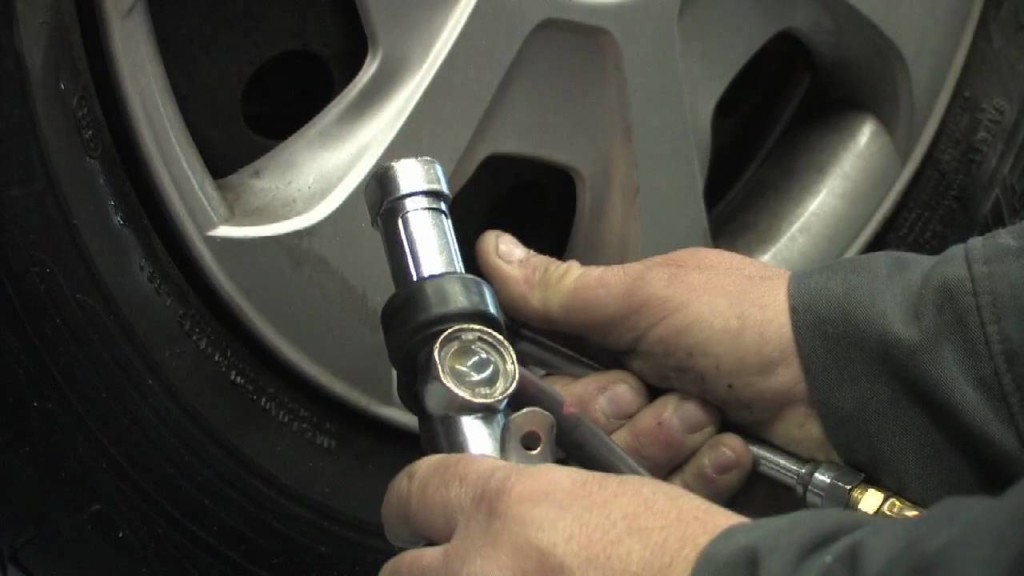Maintaining correct tire inflation pressure is very important since it helps optimize tire performance and fuel economy while over-inflated tires are just as problematic as under-inflated ones.
In fact, driving with under-inflated tires is one of the biggest causes of tire failure, according to the National Highway Traffic Safety Administration.
Besides, under-inflated tires can cause many other problems such as wearing out more rapidly, handling poorly and reducing fuel efficiency.
In addition, over-inflated tires are more susceptible to damage from road irregularities, and this also creates a bumpier ride.
Overfilling your tires is just as dangerous as under-filling them, so it’s important you know what is recommended for your vehicle.
This article will give you everything that you need know about your recommended tire pressure. These include:
Buy Pressure Gauge at Amazon
Recommended tire pressure, where to find it?Since tire pressure is so important to your safety and your car’s overall performance, it is important to know which level of tire pressure is right for your vehicle.
In fact, how much air pressure your tires need depends on several factors, including the type of vehicle, the type of tire and the intended use of the vehicle etc.
Air pressure in tires is measured in pounds per square inch or PSI. You can find your tire pressure both inside your car and on the sidewall of the tire.
How to find recommended tire pressure inside your carYou could find the manufacturer’s optimum or recommended tire pressure for your car on a sticker in the door jam, or in your owner’s manual. Some car models even place the stickers on the trunk lid, in the console or on the fuel door. For best results, look for a placard on the inside of the driver’s door, like the example in the photo below.
How to find maximum tire pressure on the sidewall of your tiresSomewhere on the sidewall of your tire, just below the big, bold letters of the manufacturer, for example, you might have noticed the words ‘Max.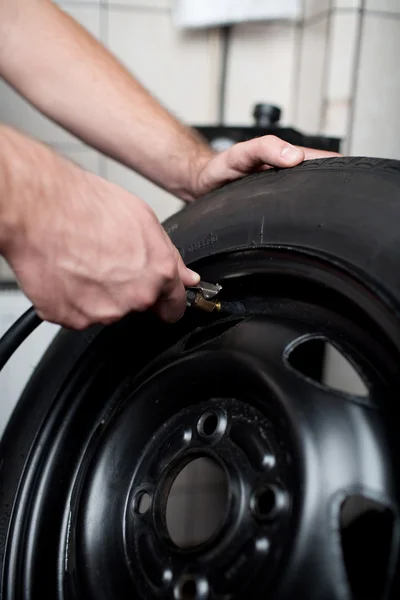 Press. 35 PSI.’ (pounds per square inch).
Press. 35 PSI.’ (pounds per square inch).
That number tells you the maximum cold pressure needed for your tire to carry its maximum load.
Most typical tires require about 32 to 35 pounds per square inch (PSI) of air, says Rod Tate, owner of highly rated Colony One Auto Center in Stafford, Texas.
Large trucks require much larger tires with PSIs of 50 to 60. Heavy-duty vehicles can go even higher. For example, tire in the picture below requires 41 pounds per square inch of air.
However, the tire’s maximum pressure is NOT necessarily the most suitable pressure for every vehicle upon which the tire can be used (almost all vehicle manufacturers’ recommended tire inflation pressures are less than the tires’ maximum pressure).
You really should follow the recommended pressure printed somewhere inside your car or in the manual rather than the maximum pressure. In the next section, I will explain why.
Buy Pressure Gauge at Amazon
Why is maximum tire pressure not the best?If you insist on inflating your tires to the max PSI, there will be more likely that two things below will happen
Since tires inflated to the max cannot give as much on the sidewall, you might see superior cornering, but it could be at the risk of your braking threshold. One quick corner and your back end could slide out.
One quick corner and your back end could slide out.
When your tires are inflated too much, the rubber rounds out at the top of the tire when you are driving, and the center will quickly wear out. You will also reduce your traction and you could even cause a blowout.
Therefore, maximum pressure is not the best, rather, recommended pressure is. I need to repeat here that the pressure listed on the sidewall is a maximum pressure only, but not a recommended pressure. Instead, you should use the air pressure recommended in the vehicle’s owner’s manual or tire information placard label.
How to check your tires pressure?Therefore, maximum pressure is not the best, rather, recommended pressure is. I need to repeat here that the pressure listed on the sidewall is a maximum pressure only, but not a recommended pressure. Instead, you should use the air pressure recommended in the vehicle’s owner’s manual or tire information placard label.
Instead, you should use the air pressure recommended in the vehicle’s owner’s manual or tire information placard label.
After knowing the most appropriate pressure for your car tires, you should check whether your tires have such pressure. In addition, checking the pressure of your tires regularly is one of the most important – and most often overlooked – regular maintenance that you should do to ensure your safety and quality of your driving. Monitoring the amount of air in your tires will let you know if you have a small leak and can help you avoid an unexpected flat tire.
Frequently checking your PSI becomes even more important in the fall and winter, when outside temperatures drop and weather conditions fluctuate causing your tires to lose air more quickly. Generally speaking, your tire will gain or lose one PSI for every 10-degree change in temperature, which means if you have a sudden drop of 30 degrees, you could lose three PSI overnight. If your tires were already low, this could cause tire damage, steering problems or even a flat tire.
Some experts recommend that you should check the air pressure every time you refuel; others say once a month is sufficient.
How to check tire pressure properly? Checking tire pressure is easy. You can do it right at home or at the gas station. Just be sure you check the pressure when your tires are cold, or have not been driven in several hours. This will give you the most accurate reading.
The most important piece of equipment you need is an accurate tire pressure gauge. You can find battery-operated digital gauges, or more traditional stick-type gauge found at most gas stations. A good gauge should not set you back more than $15 – a worthwhile investment for a longer life for your tires.
Buy Pressure Gauge at Amazon
Make sure you have your manufacturer’s PSI handy when you are checking your tire pressure, and then follow these steps:
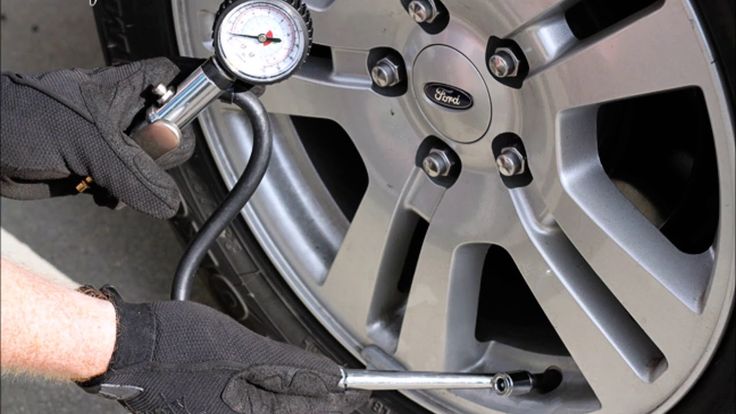
By checking tire pressure once a month, you will get a good idea how they are performing. If your tires are fairly new and continue to leak air, you should consult your dealer or mechanic. You may have a faulty valve or other damage that is difficult to detect which could unfortunately result in the need to replace the tires completely. But with proactive maintenance, you could catch an issue before it becomes a problem, and just end up needing a small repair.
But with proactive maintenance, you could catch an issue before it becomes a problem, and just end up needing a small repair.
Often, it is hard to spot an under-inflated tire until it is too late – in other words, it is completely flat. Of course, you could carry a gauge around at all times to measure the pressure, but that is not exactly convenient. Instead, watch for these signs and symptoms of tires that are under-inflated.
When your tires are under-inflated, your ride can be less smooth than usual. You may even find that it takes longer to brake.
When a tire is not inflated properly, it wears down more quickly. If you notice that one or all of your tires are wearing out faster than usual, it may be because they are under-inflated.
Tires that are under-inflated can make your vehicle quiver and shake, which is not a pleasant driving experience. Under-inflation can even cause tires to become misaligned, with comes with it is own variety of problems.
Under-inflation can even cause tires to become misaligned, with comes with it is own variety of problems.
These are all things that you need to know about recommended pressures of your car tires. After reading this article, you will never confuse about the right pressure of your tires and will know how to check it.
Please share your ideas with me if you have other tips for this.
In case you’re wondering why your gas mileage is a bit lower than usual or why the steering is getting a little sluggish while driving or why the car seems a bit close to the ground surface, then there is a strong chance there is an issue with your tires.
Having the correct tire pressure is very important for any vehicle. It helps you get better mileage and gives you protection while driving on the road. Every car has a recommended tire pressure, which provides the best mileage, tire life and handling for the vehicle. In most cases, suitable tire pressure is written on the car’s door. Below we have put together the complete tire pressure guide to help to provide you the information you need to know.
Below we have put together the complete tire pressure guide to help to provide you the information you need to know.
In new cars, the recommended pressure for the tire is listed commonly on the door on the driver’s side. If there is nothing found on the door, then you can find it in the owner’s manual. In general, most cars have recommended pressure between 32 to 35 psi.
The easy way to check the pressure of your tires is by using an air pressure gauge or pressure monitoring system and then record the reading. If you hear any kind of hissing, then it means either the gauge is not tight enough, or the gauge angle needs adjustment. Using a tire pressure gauge will immediately let you know the psi of your tires. You can quickly check the recommended air pressure inside the door to see if your tires are properly inflated. There are many affordable tire pressure monitors on Amazon & Walmart.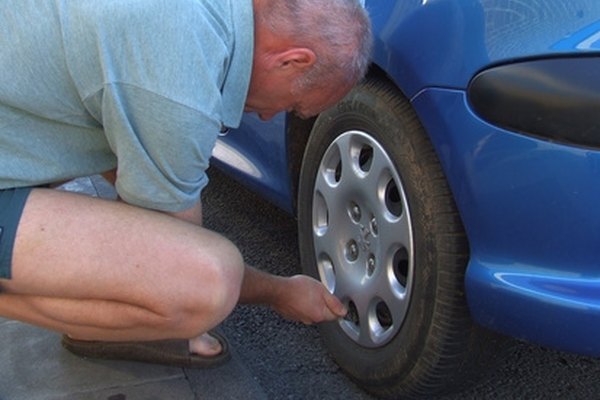
You can find the right pressure for your tire on the sidewall of your tire below the manufacturer’s label. You might see “Maximum Pressure 35 pounds per square inch”. This number indicates how much inflation pressures your tires can carry at max.
However, it is often recommended not to fill up the tires to the max because it can decrease the life of your car’s tires, and it can also jeopardize the handling. If the breaking threshold is increased which the tire pressure is at max, accidents could also take place.
Over-inflated tires can be both dangerous for your safety and also damaging for your car. This usually happens when people are distracted while they are filling up on tires. Maybe a friend of yours might have told you that it increases your car’s mileage. Here are some of the things that can happen with over-inflating the tires.
There are several safety issues that can take place with over inflation, the biggest issue being a blowout of tires.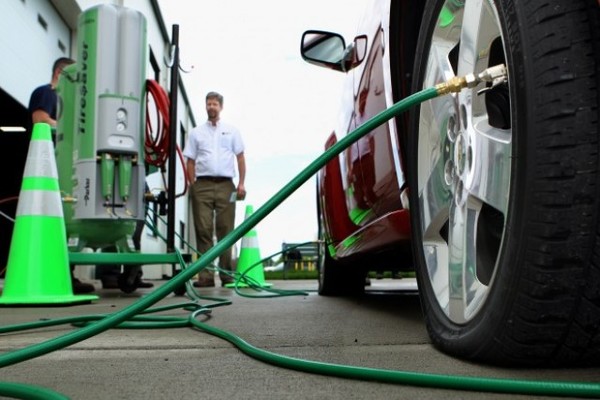 You can also lose control of the car, breaking distance can increase, etc.
You can also lose control of the car, breaking distance can increase, etc.
Overinflated tires can sometimes be more vulnerable to damage like overfilled balloons, which can easily pop when at maximum capacity. The reason being that inflated tires are inflexible and stiff, which makes them susceptible to pothole damage, debris, and curbs. The passenger and the driver will also feel every single bump along the way making the ride unbearable. We recommend using proper tire inflation.
As far as the safety protocols are concerned, the majority of the people consider underinflation worse than over inflation. However, there is no denying that both conditions offer their own significant issues.
An underinflated tire can cause a reduction in stability, lousy control, and poor handling of the vehicle. It can also cause a decrease in fuel economy and can even cause premature or uneven wear of the tire.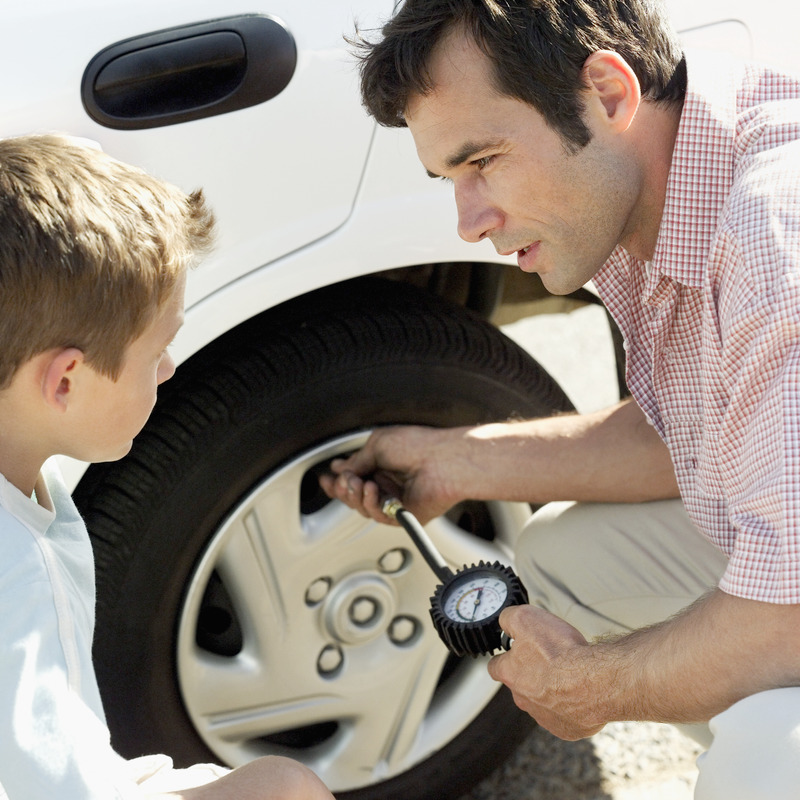
Underinflated tires are worse because it allows the tire to get heated far quicker, which eventually causes blowout of the tire.
Overinflated tires also have its own issues such as it can wear out the center of the tire faster and makes the tire lose its flexibility.
Most automobile companies have recommended that tire pressures need to be checked at least once a month. Tires often seep a small portion of gas outside, and that is why it is possible that the pressure will reduce with time. We recommend checking your vehicle’s tires twice a month during the winter months.
Let’s make it simple for you. You don’t need to change your tire pressure every time there is a change in temperature outside. However, you might want to add more air when it gets cold outside. There is a simple key to it, keep the tires at a suitable pressure (recommended).
It is often recommended to deflate the tires when it’s hot outside because hot air outside can cause the air inside of the tire to expand, which can cause the tire to blowout.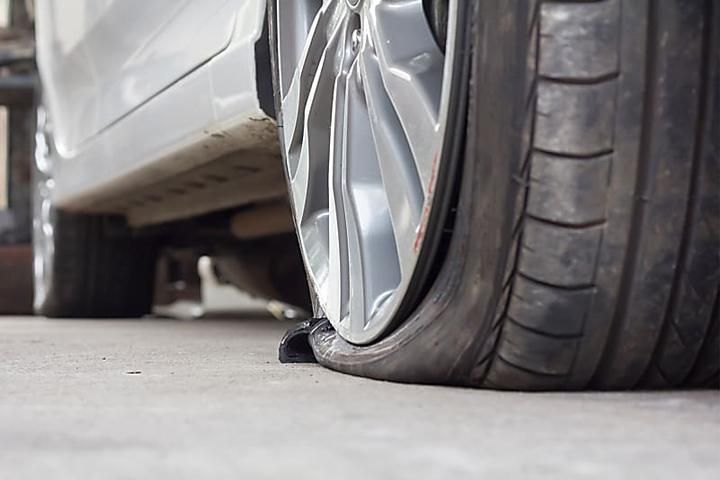 So, it is possible that you added air pressure of around 35 psi and it summers it went up to 40 psi.
So, it is possible that you added air pressure of around 35 psi and it summers it went up to 40 psi.
Despite the recommended tire pressure being 32-35psi by several car manufacturers, weather and climate play a crucial role in determining the right pressure for the tire. Several tire manufacturers have suggested that in winters, the tire pressure should be at least 3-5psi higher than the ones recommended for summers.
The reason behind this is because, in winter, the air inside the tire gets contracted which decreases the air pressure up to 5 psi.
Cold weather can cause your tire to lose to get dangerously underinflate. In the fall, cold weather or winters can significantly lower the air pressure in the tire. The process is called air contractions, and it can cause an annoying tire light.
We hope the article helped you somewhat when it comes to tire pressure.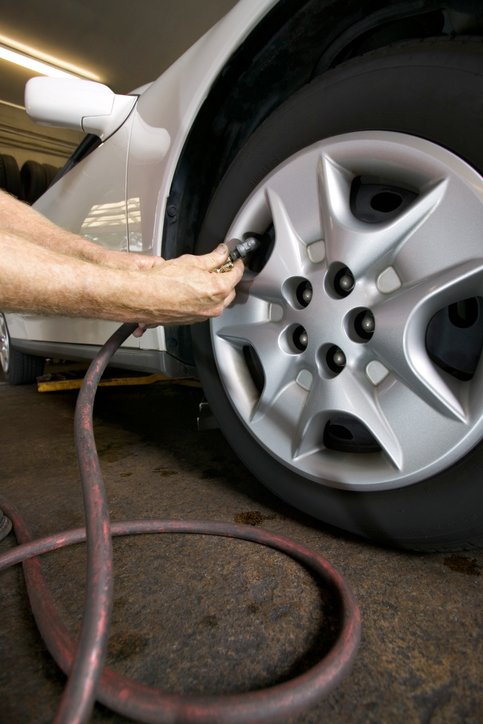 Want to get free air, then visit freeairpump.com. No matter if your tires are underinflated or overinflated, get a free visit and enhance your driving safety experience and save some money on your gas tank. If you are looking for a used car check out our inventory at 500 Below Cars.
Want to get free air, then visit freeairpump.com. No matter if your tires are underinflated or overinflated, get a free visit and enhance your driving safety experience and save some money on your gas tank. If you are looking for a used car check out our inventory at 500 Below Cars.
If a car tire is under-inflated by even 20%, tire life is reduced by about a third. What if the pressure is even lower? Here we can already talk about the catastrophic destruction of the tire. And under certain circumstances, the wheel can "shoot" or disassemble - if the speed is high, the car becomes uncontrollable. How often do you check the pressure in your car tires?
Tire manufacturers recommend checking the tire pressure every two weeks (every 2000 km for intensive runs). Because air, albeit gradually, but leaves the wheel - tire materials are not absolutely tight. Tire damage, valve leaks, etc. can be additional aggravating factors. Therefore, the pressure in the wheel is reduced. In addition, it would be useful to pick up a pressure gauge before a long trip, especially if you have to drive along highways.
In addition, it would be useful to pick up a pressure gauge before a long trip, especially if you have to drive along highways.
Please note that the lower the temperature, the lower the tire pressure.
An even more important question - where to check? We are used to using the services of tire shops or a free compressor at some gas stations. But do they take into account that during the trip the tires heat up, and the pressure in them increases?
By the time you get to the tire shop, the tires will warm up and you will have to take this into account. How - no one will say for sure (depending on traffic conditions and weather conditions, as well as a number of other factors, the data can "dance" within a few tenths of an atmosphere). Therefore, checking and adjusting the pressure of "hot" tires is strongly discouraged. Measurements should be taken "cold", that is, before the trip, while the tires have not yet warmed up, or after a long parking (not earlier than an hour after stopping).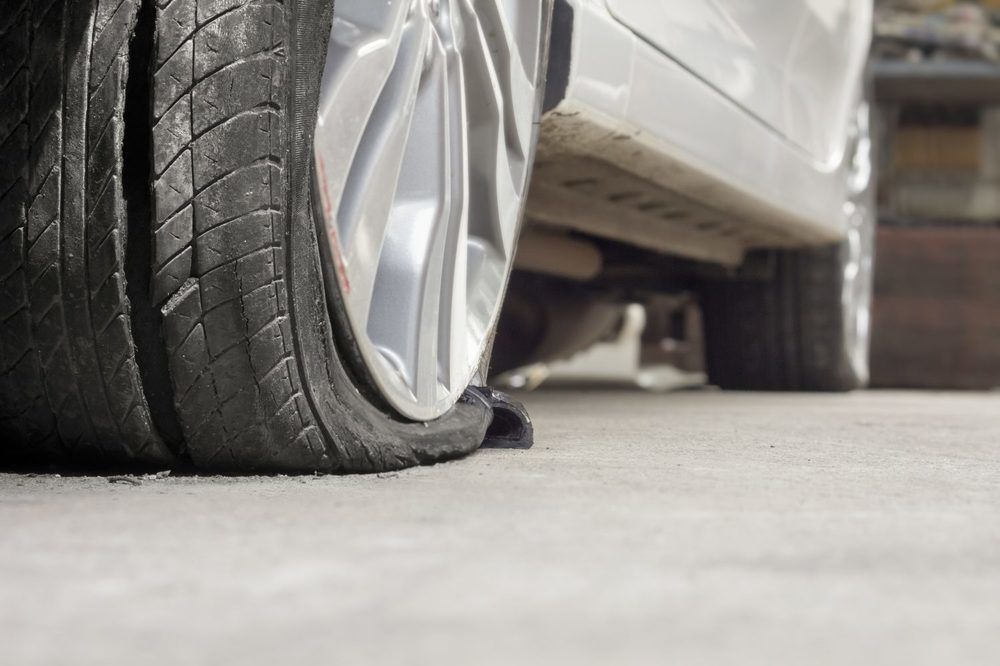 Therefore, it is better to do it all the same in the old fashioned way: with your pressure gauge before leaving the yard.
Therefore, it is better to do it all the same in the old fashioned way: with your pressure gauge before leaving the yard.
Whatever all of the above is not purely theoretical, we carried out a series of measurements. First, we tested the theory about "cold" and "hot" tires (see table 1 ). On the street - minus 11 C, the car just after the night "hibernation". Three control measurements, and we make sure: the pressure is only 1.8 atmospheres instead of the recommended 2.0 atmospheres. Let's pump up the wheel later - it is important for us to find out how much the pressure gauge readings will change after the car has been on the road for some time.
| Tire condition | ambient air t | Pressure |
| "Cold" | -11 C | 1. |
| "Hot" | -10 C | 1.9 bar |
City driving hour,
20 km behind - this is enough for the wheels to warm up. The next series of measurements gives a new result - 1.9 atm. The difference between the "cold" and "hot" checks was only 0.1 atmospheres, but, firstly, the ambient temperature was not high, and secondly, there was a measured ride, during which the tachometer needle rarely exceeded
60 km/h Dynamic driving, driving at high speed, especially when the surface temperature is much above zero - all this will lead to the fact that the run-up will be much greater. By the way, changing tire pressure while driving is just the "evil" that you have to deal with in the world of motorsport.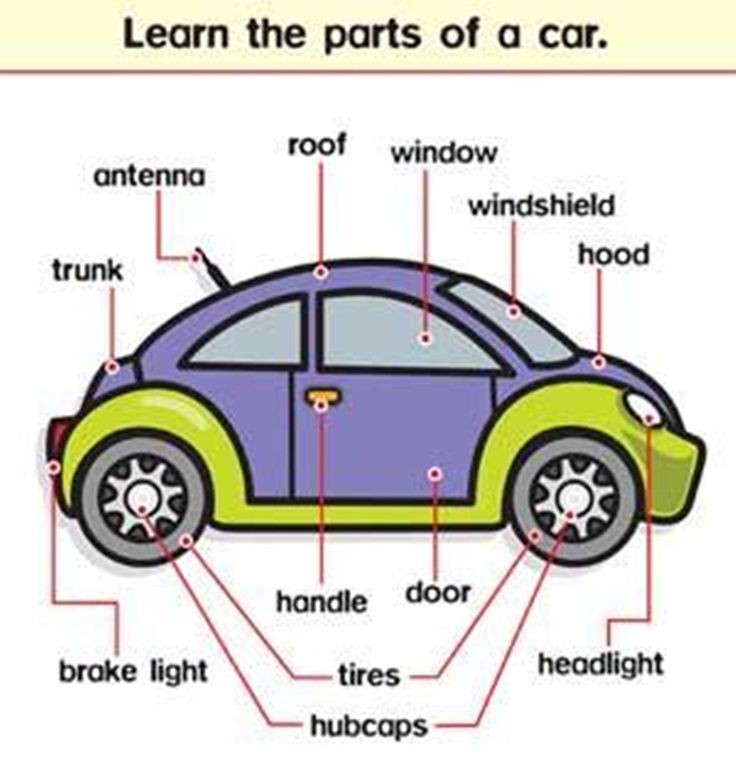 After all, the entire potential of the car, ultimately, depends on the contact of the wheels with the road, but what it will be like is just a matter of correctly set pressure. Naturally, it is selected taking into account a number of factors, including the predicted heating of tires.
After all, the entire potential of the car, ultimately, depends on the contact of the wheels with the road, but what it will be like is just a matter of correctly set pressure. Naturally, it is selected taking into account a number of factors, including the predicted heating of tires.
But that is sports, but for civilian driving there are rules. And they are as follows: the pressure is set in accordance with the manufacturer's recommendations - at the set value and at the moment when the tires are "cold".
But what about the dependence of readings on ambient temperature? We placed the same wheel in three different climatic conditions (see table 2 ). First, it spent 12 hours in a warm box at an air temperature of 18 C - the pressure was 2.2 atm. Then another 12 in a cold box at an air temperature of minus 3 C. The pressure dropped by 0.05 atm - up to 2.15 atm. A little? Well, now one night in the trunk of a car, where minus 12 C was observed by morning.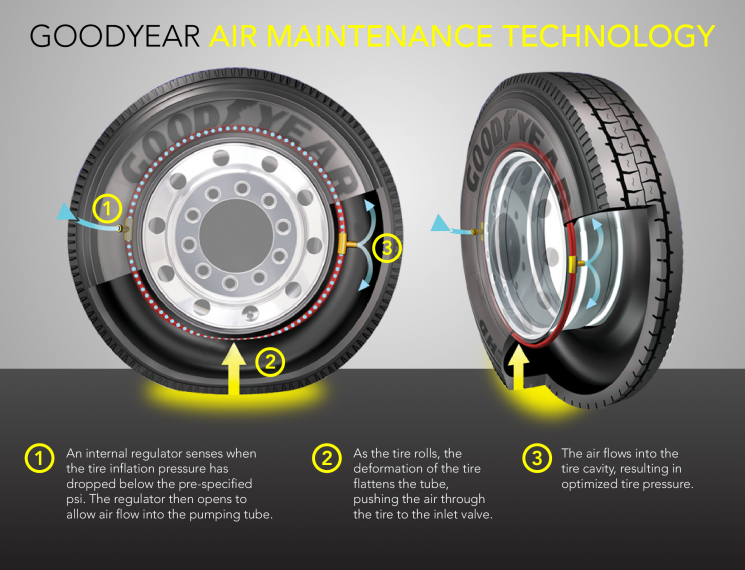 The pressure dropped to 1.95 atm - compared to the original value, it decreased by 0.25 atm!
The pressure dropped to 1.95 atm - compared to the original value, it decreased by 0.25 atm!
| Wheel storage | t ambient air | Pressure |
| Warm box | 18 C | 2.2 bar |
| Cold box | - 3 C | 2.15 bar |
| Street | - 12 C | 1. |
The data obtained confirms the theory that when the ambient temperature fluctuates slightly, no pressure correction is required. But when the jump is more significant (for example, in our case it was 30 C), the difference will be much more significant (again, in our case it was more than 10% of the original value). But getting such a run is not so difficult: take a “warm” wheel from a heated garage, set the pressure, then install it on a car that drives on winter roads - here you have a difference of several tens of degrees ...
Properly set pressure not only contributes to the maximum life of tires, but also ensures comfortable and safe movement by car, allows you to most effectively use all its technical potential.
Inflated tires make the car react more sharply, help to reduce fuel consumption (after all, rolling resistance is reduced). But at the same time, the car goes through all the bumps harder - both driving comfort and suspension resource suffer.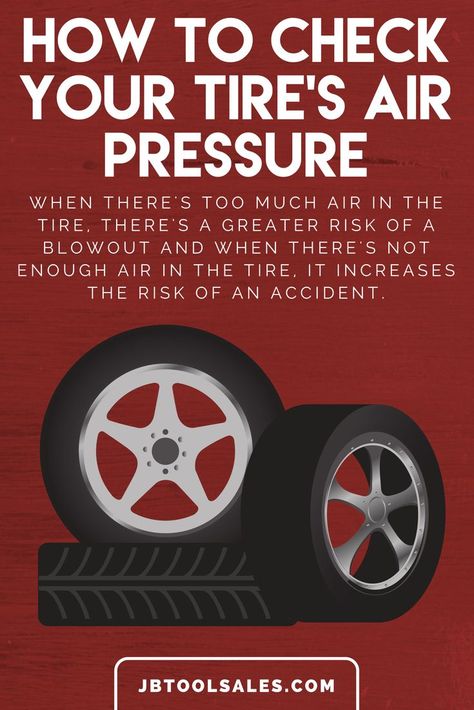 In addition, the tire itself wears out unevenly - the middle part of the tread tread is "erased" faster.
In addition, the tire itself wears out unevenly - the middle part of the tread tread is "erased" faster.
Insufficient pressure causes increased tire deformation, heating, which leads to accelerated wear or failure. Rolling resistance increases, resulting in increased fuel consumption. Handling deteriorates, there is a risk of slipping of the tire relative to the rim, and the likelihood of a tire “breaking” in a sharp turn increases, as a result of which contact of the rim with the road is possible, which is already fraught with a coup. Naturally, all this is a consequence of extremely low pressure, which, as a rule, rarely reaches. Usually, even the most "lazy" owners get off with only increased fuel consumption and accelerated tire wear.
But sometimes low blood pressure is good. Indeed, in this case, the contact patch with the road increases - this quality can be used when driving off-road on soft ground. But then, having driven onto a paved road, it is necessary to pump up the tires to the required pressure value.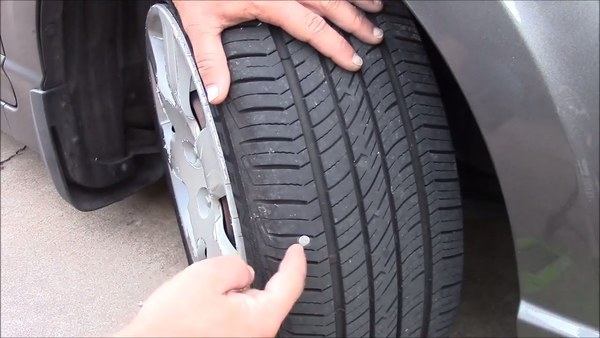
It is believed that the condition of the tires can be determined with what pressure they were used. Uniform wear indicates that the pressure was normal or close to the recommended values. A worn out middle part of the tread is a sign that the owner preferred to pump the tires, but with reduced pressure, the side parts of the tread suffer more.
For each model, the automaker recommends its own tire pressure values, and they can be individual for each modification or depend on the tire size. It should also be noted that the tire pressure on the front and rear axles may differ. Often, the automaker indicates two values: for a car with a partial load (with a driver and a passenger) and with a full one - in the second case, the pressure should be increased by 0.2-0.3 atm (the second value is also recommended for long trips at high speeds). The manufacturer's data is indicated in the operating instructions, as well as in the car itself - usually an information plate is placed on the inside of the gas tank hatch or in the doorway on the driver's side (on the central pillar or on the end of the door).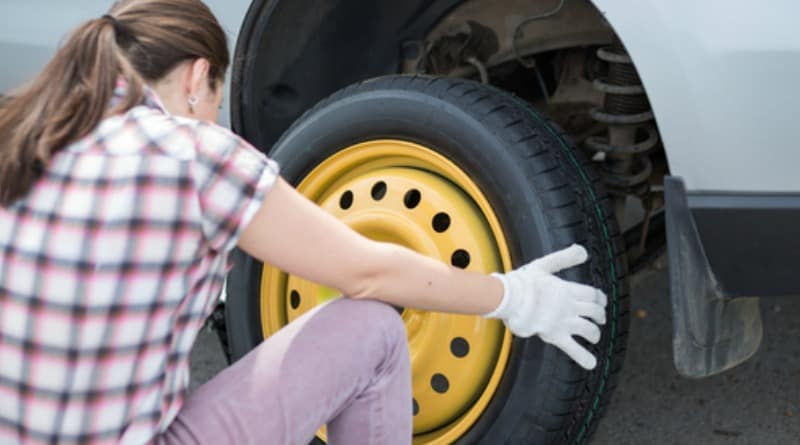
At the very least, many motorists still follow the "main" wheels, but the spare one, as a rule, is left without attention, and when the X-hour comes, the "spare wheel" is usually empty. Therefore, it is recommended not only to periodically check the pressure in the fifth wheel, but also to pump it by about 0.3 atm - in reserve.
P. S. The behavior of the car on the road largely depends on the correct tire pressure. We told you how to do this, although it could be easier to say: follow the manufacturer's recommendations. And do not be lazy to check the wheels from time to time, because this is the key to your safety.
The optimum time to change tires seasonally differs from year to year due to quirks of the weather. And this is normal even for one city - what can we say about different regions, where ideas about winter and summer can differ significantly. Therefore, legislative initiatives on forced seasonal “changing of shoes” of cars in strictly defined months look rather strange: nature will still make adjustments.
And this is normal even for one city - what can we say about different regions, where ideas about winter and summer can differ significantly. Therefore, legislative initiatives on forced seasonal “changing of shoes” of cars in strictly defined months look rather strange: nature will still make adjustments.
Here, an analogy with public utilities is appropriate, who start and end the heating season not according to the calendar, but when a certain average daily air temperature is reached - that is, based on the objective readings of the thermometer. The same approach should be followed by motorists when choosing the time to change tires.
At what temperature should tires be changed? Manufacturers believe that +7 degrees Celsius is the optimal moment for seasonal “changing shoes”. At this point, the graphs of grip levels for winter and summer tires converge: at temperatures above +7°C, winter tires work inefficiently and wear out quickly. And at lower temperatures, the performance of already summer tires drops.
But this graph reflects the properties of some average tires. In reality, the composition of the rubber compound for different tires is significantly different. The same winter tires can be both soft "Scandinavian" (hardness 50-55 Shore units), and "Central European", with a hardness of 60-65 units. Obviously, their indicators are very different: the first ones will “float” even with a small plus, the second ones will work tolerably even at +10°C.
Read more: Which tires are best? Scandinavian, European, studded
The choice of temperature is also somewhat arbitrary. In a sharply continental climate, it can be +7 during the day, and -3 at night, and in the morning you will be met by a dangerous ice film on the road. Therefore, it is better to be guided by logic: switch to summer tires when there is no chance of encountering ice on the road. That is, if during the day the thermometer does not go into minus, and the long-term weather forecast does not promise a cold snap. And vice versa, put winter tires before the onset of "near zero" temperatures and the first frosts that threaten to turn puddles into ice.
And vice versa, put winter tires before the onset of "near zero" temperatures and the first frosts that threaten to turn puddles into ice.
But still, it is the temperature, and not the presence of precipitation, that is the key signal to change tires. For example, at -5°C, summer tires are ineffective even on absolutely dry pavement. And when the temperature rises from +4 to +11°C (just in the region of "transitional" +7°C), the braking distance on winter tires increases by half a meter at once. With a further increase in temperature, winter tires are losing on braking to summer tires for several car bodies. Therefore, driving on winter tires in summer is very fraught.
Read more: To inform or change shoes? Do I need to change winter tires for summer ones in summer
If you have bought a new set of tires, you can immediately start installing it. But old tires that have been waiting in the wings for six months require certain checks.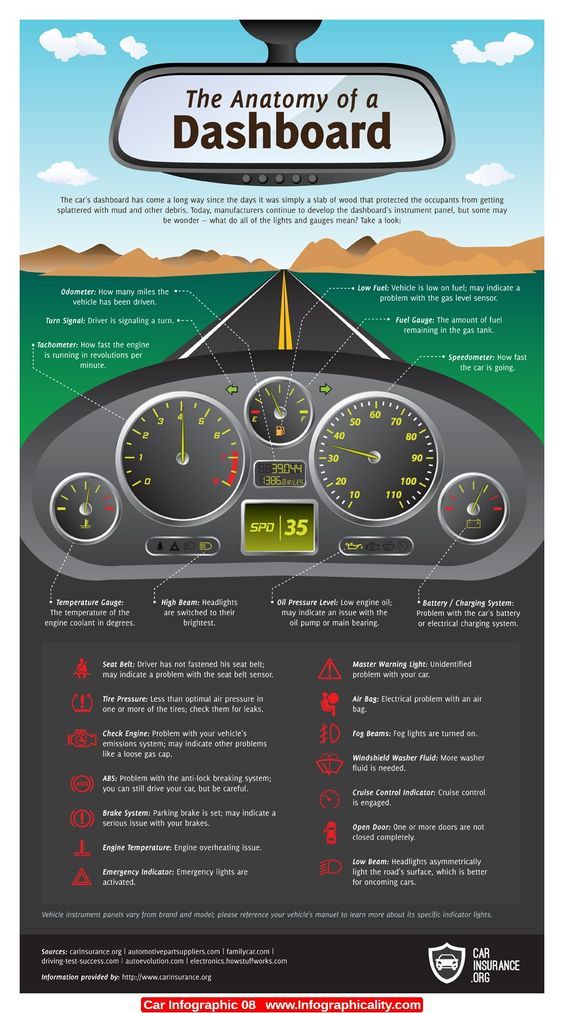
First of all, make sure the tires are still serviceable. According to the Rules of the Road, the minimum allowable tread depth for passenger car tires is 1.6 mm (summer tires) and 4 mm (winter tires). With a smaller balance, you can no longer ride on tires.
You can measure the remaining tread with a special tool - a caliper. There are also special wheel tread depth gauges, including digital ones.
Another important traffic law requirement for tires: they must be the same (at least on each of the axles). Modern cars equipped with a lot of smart electronics - ABS, directional stability and braking force increase systems - are even sensitive to uneven tire wear, not to mention different sizes or tread patterns. But the dangerous experiments of drivers with the so-called mixed fleet (sets assembled from different tire models) are already a thing of the past.
Also, before installation, you need to visually assess the condition of the tires. When stored for a long time, especially in unsuitable conditions (for example, at high humidity, which is not uncommon in private garages), the rubber may deform, crack or dry out. It is impossible to install tires with such defects: at high speed, any crack in the rubber becomes extremely dangerous and threatens to explode the tire.
It is impossible to install tires with such defects: at high speed, any crack in the rubber becomes extremely dangerous and threatens to explode the tire.
By the way, for seasonal storage of tires, you can use the “tire hotel Hyperauto”, where the correct temperature and humidity are constantly maintained. Hyperauto specialists bear full financial responsibility for the tires, and on the day you have appointed, they themselves bring the wheels for tire fitting, which is very convenient.
In addition to the tread depth and the absence of external defects, before installing the tires, you need to check their uniform wear (the tire should not be “eaten” from one side), as well as age. Natural rubber, from which rubber is made, retains its properties for 5 years from the date of manufacture of the tire. The aging of rubber greatly affects the effectiveness of traction, so it’s not worth driving on old, even if not worn, tires.
When changing tires, do not forget about their periodic rotation - rearrangement, the diagram of which can be found in the instructions for the car.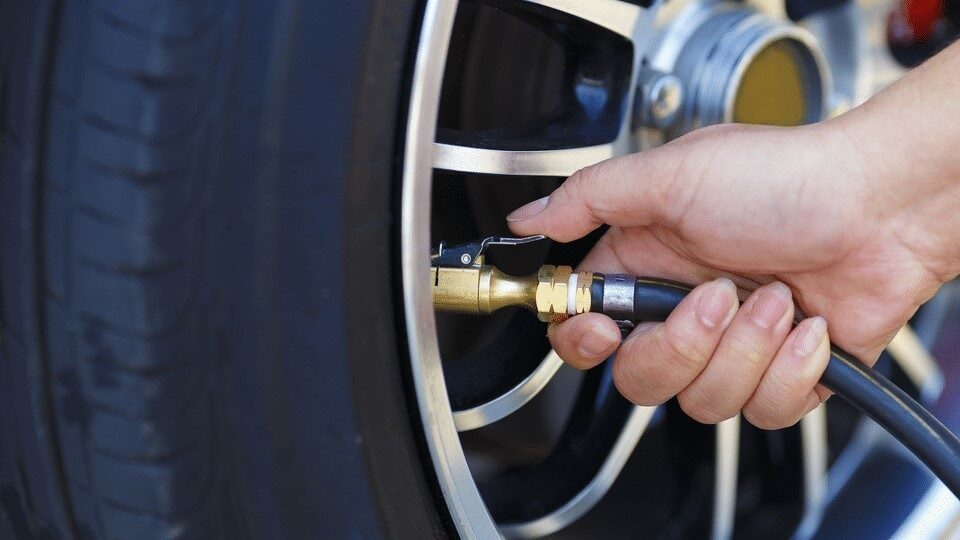 Rearranging the wheels ensures uniform wear, which prolongs the life of the entire set. Standard tire rotation schemes are presented below, but it is better to check the instructions for your particular machine. It is recommended to change tires every 10,000 km.
Rearranging the wheels ensures uniform wear, which prolongs the life of the entire set. Standard tire rotation schemes are presented below, but it is better to check the instructions for your particular machine. It is recommended to change tires every 10,000 km.
On rear- and all-wheel drive vehicles, the front tires are moved to the rear axle diagonally (diagram A), or they are changed in a cross pattern (B). On machines with front-wheel drive, the situation is reversed: the rear tires are moved diagonally forward (Diagram C).
Tires with a directional tread pattern cannot be turned without overbeading. To rotate them without removing them from the disks, the front wheels are simply swapped with the rear wheels on each side of the car (Diagram D).
If the car is equipped with a full-size spare tire, not a spare tire, and you bought a set of five new tires, be sure to include the "spare" in the rotation (diagrams E and F), changing the wheels every 10,000 km. This will allow you to use the kit longer and easily replace any of the main ones with a spare wheel in case of damage - their wear will be the same. Thanks to this scheme, buying five tires in the end turns out to be more profitable than four, due to longer operation.
Thanks to this scheme, buying five tires in the end turns out to be more profitable than four, due to longer operation.
To maintain rotation, mark old tires with a colored marker before they are removed from the machine; if you forget about it, then it will be difficult to figure out where which tire was.
In the event that a replacement set of wheels is put on individual rims, check the pressure in them before installing them on the machine. If the tire deflated during storage, look for the reason - the air does not just leave. Under the weight of the car, the air leakage will only intensify, and the next morning after "changing shoes" you will have a flat tire waiting for you if you do not fix it in advance.
Do not forget that the pressure in tires of different sizes may differ - do not inflate the old one, getting used to it in six months. Look for recommended pressures for different tire sizes on a sticker in the doorway.
Read more: Tire pressure. How and why to measure it
How and why to measure it
Do not forget about the importance of wheel balancing: it ensures uniform rotation, the absence of vibrations on the steering wheel and body, and also saves the life of wheel bearings. Balancing is needed for each wheel of the car, including the spare one, in case of emergency installation on the road, as well as for planned tire rotation.
Even if you use two sets of wheels on different rims, check the balance of each set before installing. During the season, the tire tread wears out (not always evenly), and the installed weights often fall off - as a result, the wheel balance may be disturbed.
Whenever dismantling the wheels, it is worthwhile to carry out an express inspection of the suspension parts, check the condition of the brake hoses and the thickness of the brake pads. In general, it is useful to combine seasonal tire changes with chassis diagnostics: it is better to identify any unpleasant surprises in advance.